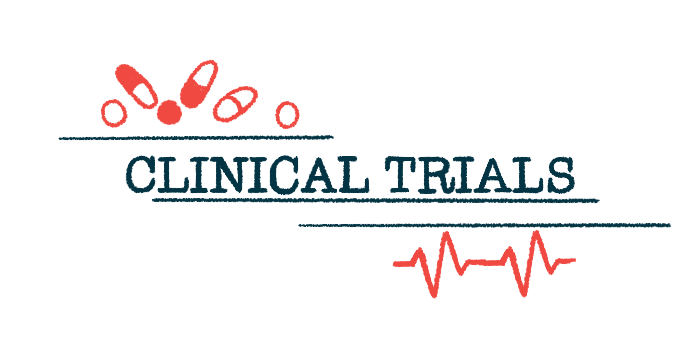In KINECT-HD trial, Ingrezza leads to lower chorea levels, benefits
Treatment was cleared last month by FDA for Huntington's disease symptom
Written by |

The benefits of Ingrezza (valbenazine) for people with Huntington’s disease — reductions in uncontrolled movements and gains in clinician- and patient-reported health — were seen two weeks after starting treatment and maintained for up to three months, according to new KINECT-HD trial analyses.
Ingrezza was cleared last month by the U.S. Food and Drug Administration for Huntington’s chorea, the involuntary movements that affect up to 90% with the neurodegenerative disease, based on earlier data from KINECT-HD (NCT04102579).
The new exploratory analyses were presented at the 2023 Movement Disorder Society International Congress of Parkinson’s Disease and Movement Disorders, Aug. 27-31 in Copenhagen, Denmark. The poster was titled, “Chorea Improvements Over Time with Once-Daily Valbenazine Treatment in Adults with Huntington Disease.”
“The recent approval of Ingrezza for chorea associated with [Huntington’s disease] in adults was supported by data from the pivotal KINECT-HD study,” Olga Klepitskaya, MD, medical director at Neurocrine and one of the study’s authors, told Huntington’s Disease News. “This new exploratory analysis of KINECT-HD showed greater improvements in [Huntington’s]-related chorea in Ingrezza-treated participants versus placebo, with results seen as early as 2 weeks at the lowest, starting dose of 40mg.”
Ingrezza for Huntington’s chorea
Ingrezza is thought to work by reducing the activity of the signaling molecule dopamine to prevent uncontrolled movements. Before being cleared for Huntington’s, it was approved in the U.S. in 2017 for tardive dyskinesia.
In KINECT-HD, adults with Huntington’s-associated chorea were randomly assigned an oral Ingrezza or a placebo once daily for 12 weeks, or about three months. After two weeks at 40 mg, the dose was gradually titrated up to a target of 80 mg daily, with adjustments based on tolerability.
Of the 125 adults in the trial’s full analysis, 68 were women and 57 were men with a mean age of 53.3 in the placebo group and 54.1 in the Ingrezza group. Its main goal was to evaluate changes in chorea severity, as assessed by the Total Maximal Chorea (TMC) score of the Unified Huntington’s Disease Rating Scale from before treatment (baseline) to the last two weeks of treatment (weeks 10-12).
Previous results showed the goal was met, with chorea scores dropping by an average of 4.6 points in Ingrezza-treated patients — a statistically significantly difference compared with the placebo, which saw a 1.4-point drop.
Clinicians and patients were also more likely to report meaningful improvements in overall health with Ingrezza over a placebo, as reflected by a score corresponding to “improved” or “much improved” on the Clinical Global Impression of Change (CGI-C) and Patient Global Impression of Change (PGI-C) scales, respectively, by the end of the trial.
Specifically, 42.9% of Ingrezza-treated patients were considered responders on the CGI-C, compared with 13.2% on a placebo. Likewise, patient-rated responder rates on the PGI-C were 52.7% on Ingrezza over 26.4% on a placebo.
Ingrezza benefits are early, lasting
In the presentation, scientists demonstrated the benefits of Ingrezza were observed early and were sustained throughout the trial.
Significant reductions in chorea were observed as soon as two weeks after starting treatment, when patients were still being given 40 mg. At that time, TMC scores dropped by 2.9 points from baseline in the Ingrezza group, compared with 1.6 points in the placebo group.
The difference remained significant. Two weeks after stopping treatment, TMC scores returned toward pre-treatment baseline values.
Both patient- and clinician-rated responder rates were also consistently higher with the Ingrezza group over the placebo group throughout all time points.
CGI-C differences between Ingrezza and a placebo reached statistical significance as soon as week 4 (23.8% vs. 3.4%) and were maintained throughout treatment. PGI-C responder rates were significantly higher as soon as week 2 (23.4% vs. 4.9%) and remained higher throughout the trial, with statistical significance at most time points.
“The exploratory analysis from our KINECT-HD study further exemplifies the value of INGREZZA as a now approved medication for [Huntington’s disease] chorea with improvements seen with treatment as early as two weeks,” Eiry W. Roberts, MD, chief medical officer at Neurocrine, said in a company press release. “Additional analyses presented add to the body of evidence regarding the use of INGREZZA for this patient population.”
Participants in KINECT-HD and other adults with Huntington’s-associated chorea are have joined the KINECT-HD2 open-label trial (NCT04400331), which is evaluating the safety and efficacy of up to three years of treatment. It’s slated to finish by the end of the year.
“The KINECT-HD study has provided valuable data regarding the safety and efficacy of Ingrezza for [Huntington’s] chorea in adults and we continue to look at the data in new ways,” said Erin Furr Stimming, MD, a professor of neurology at UTHealth Houston and the trial’s principal investigator on behalf of the Huntington Study Group. “This exploratory analysis has increased our insight regarding the early and sustained improvements in chorea severity.”






